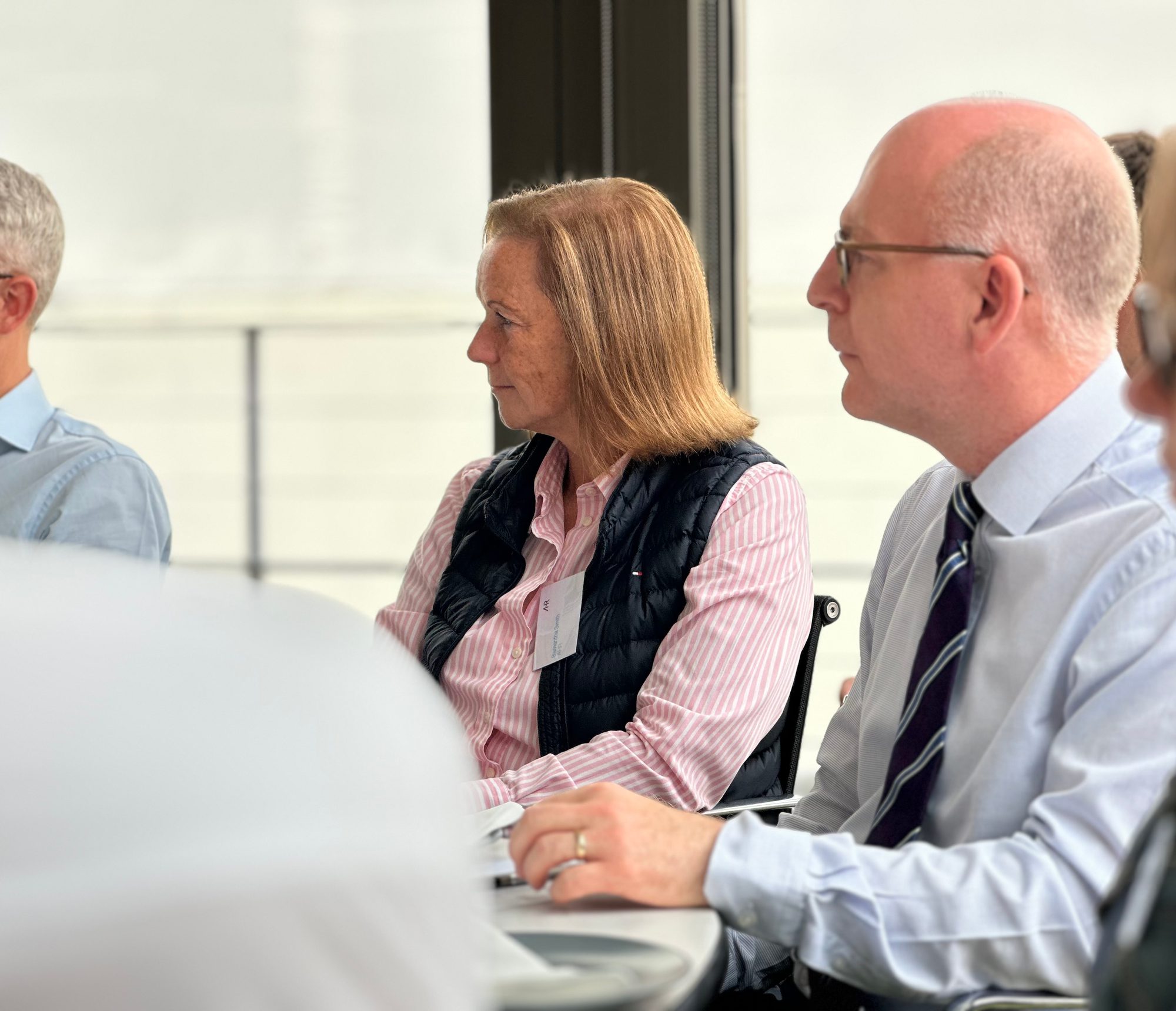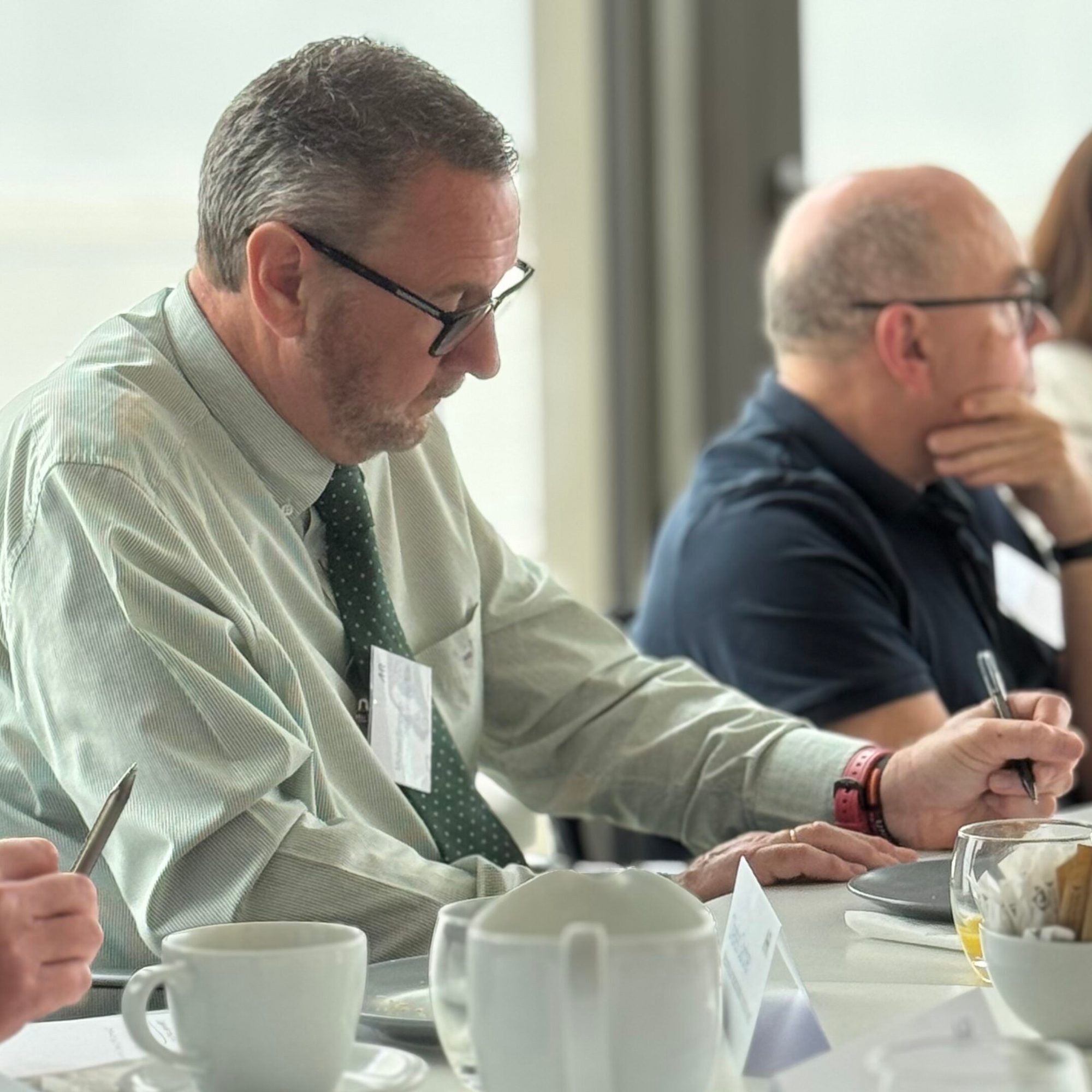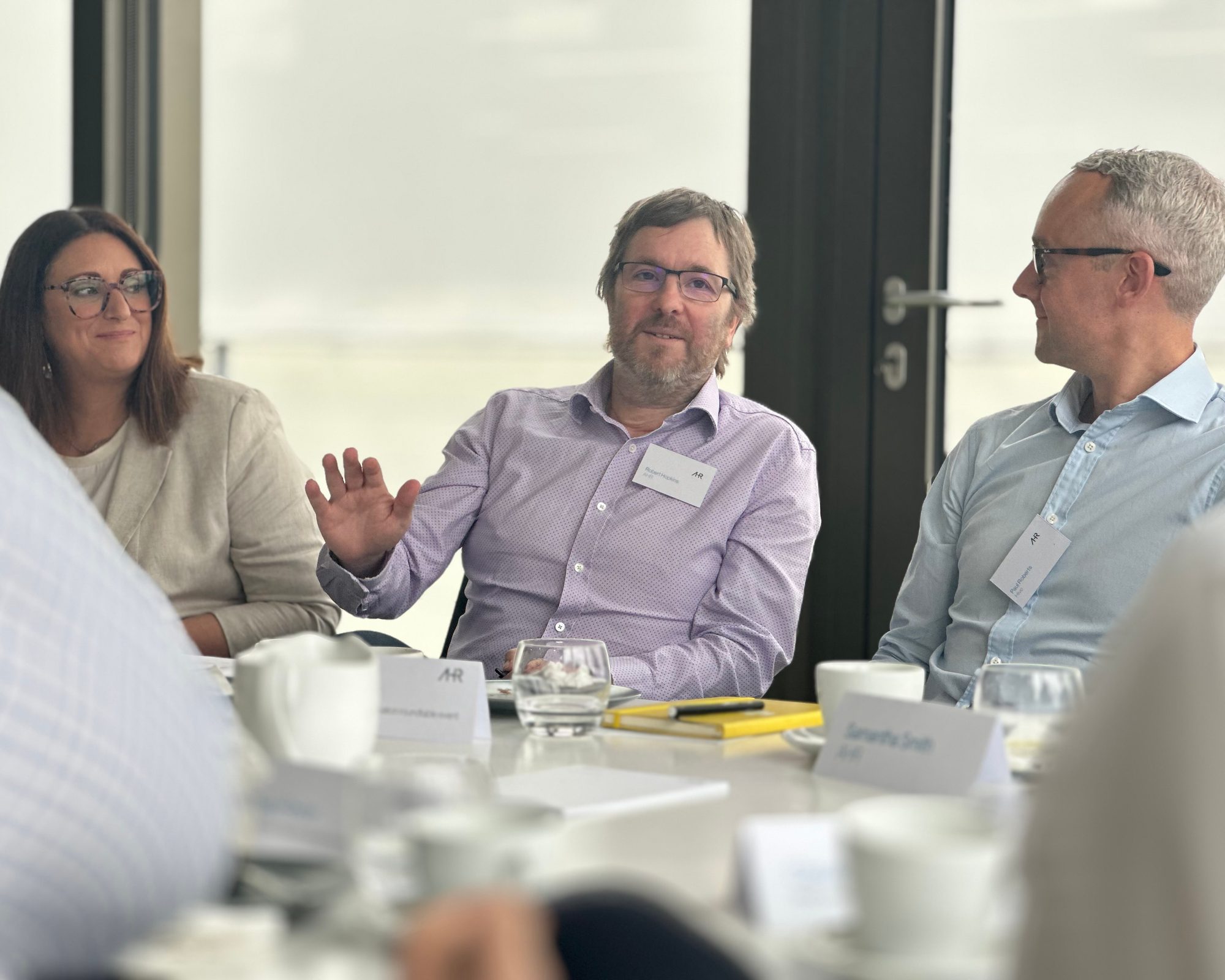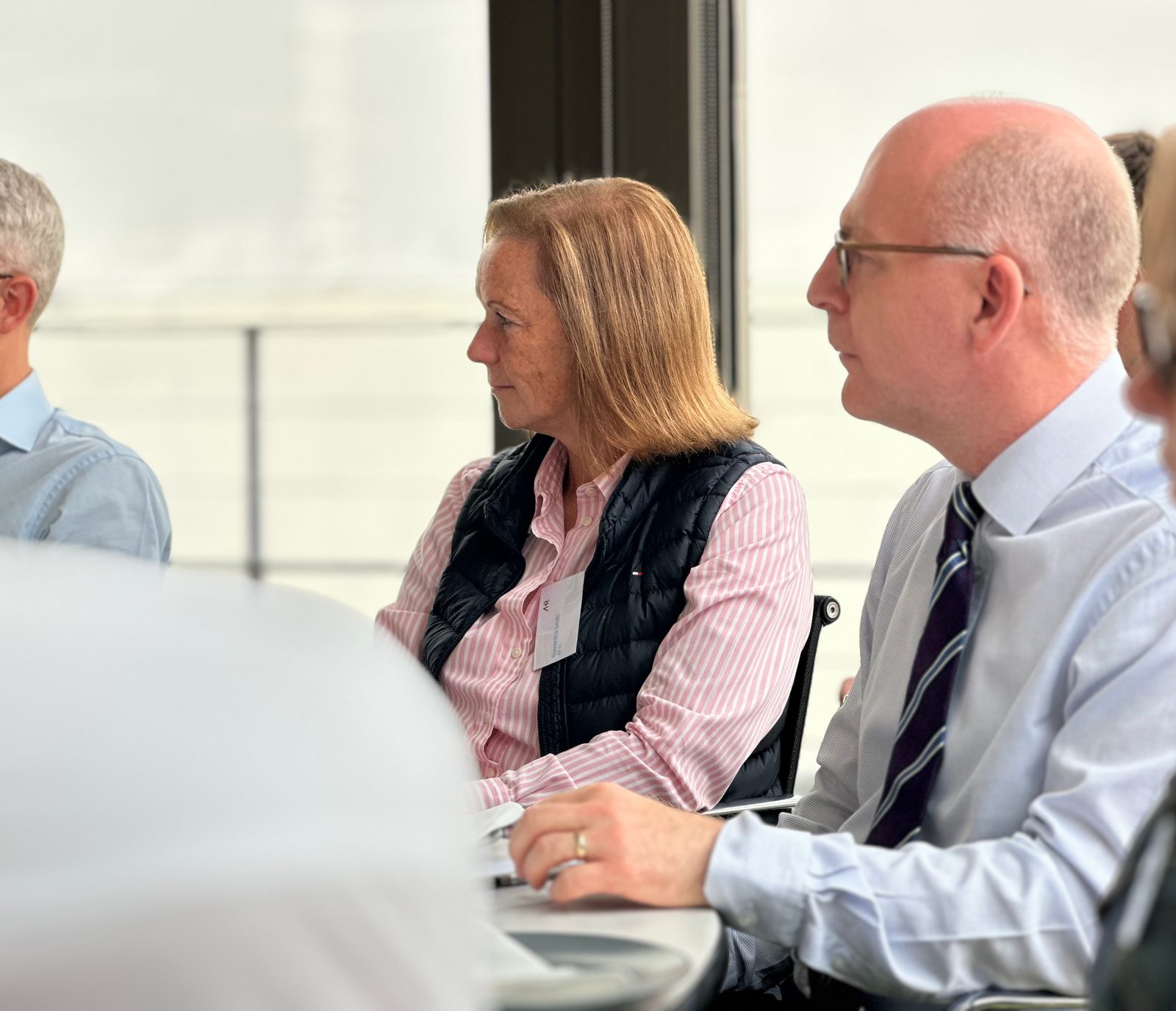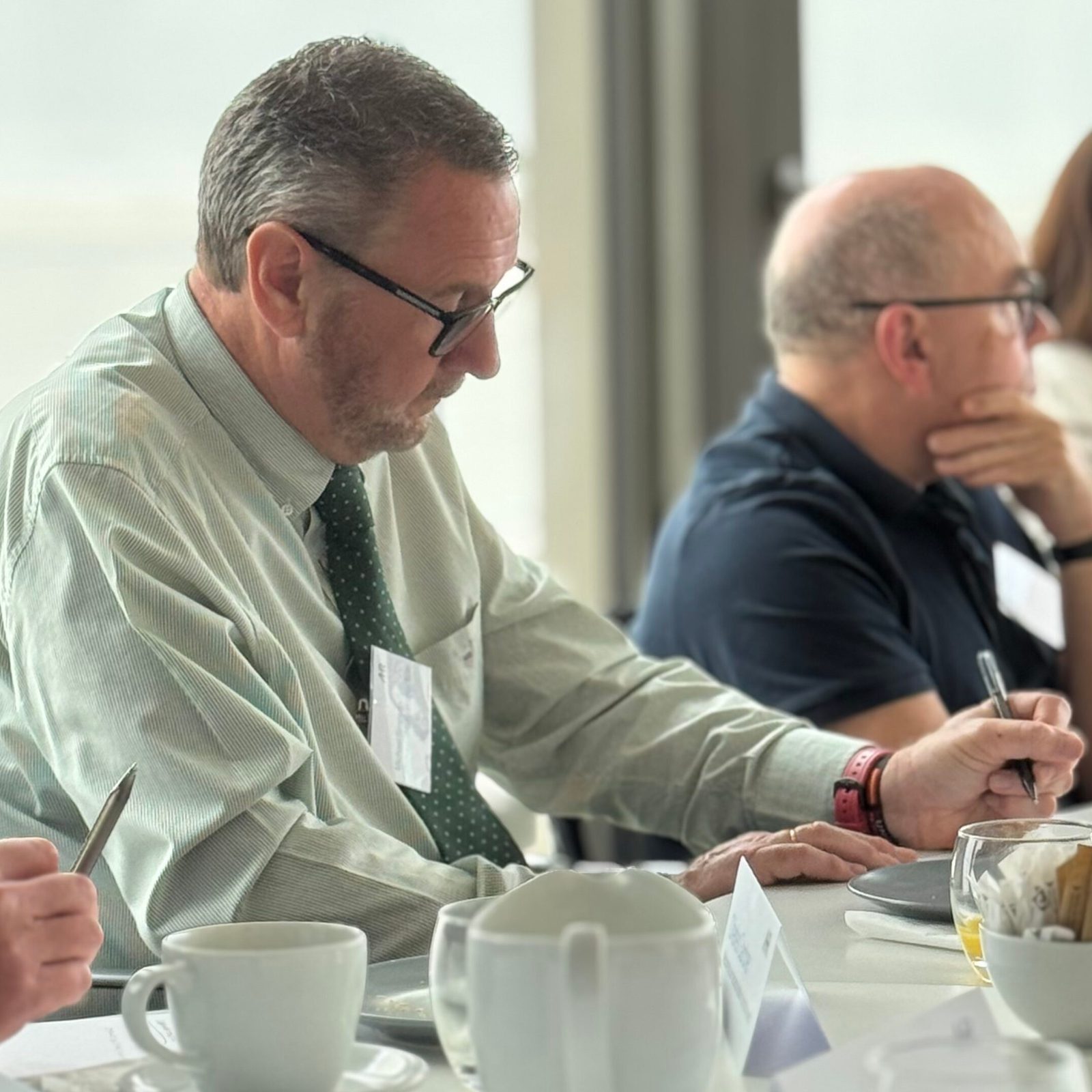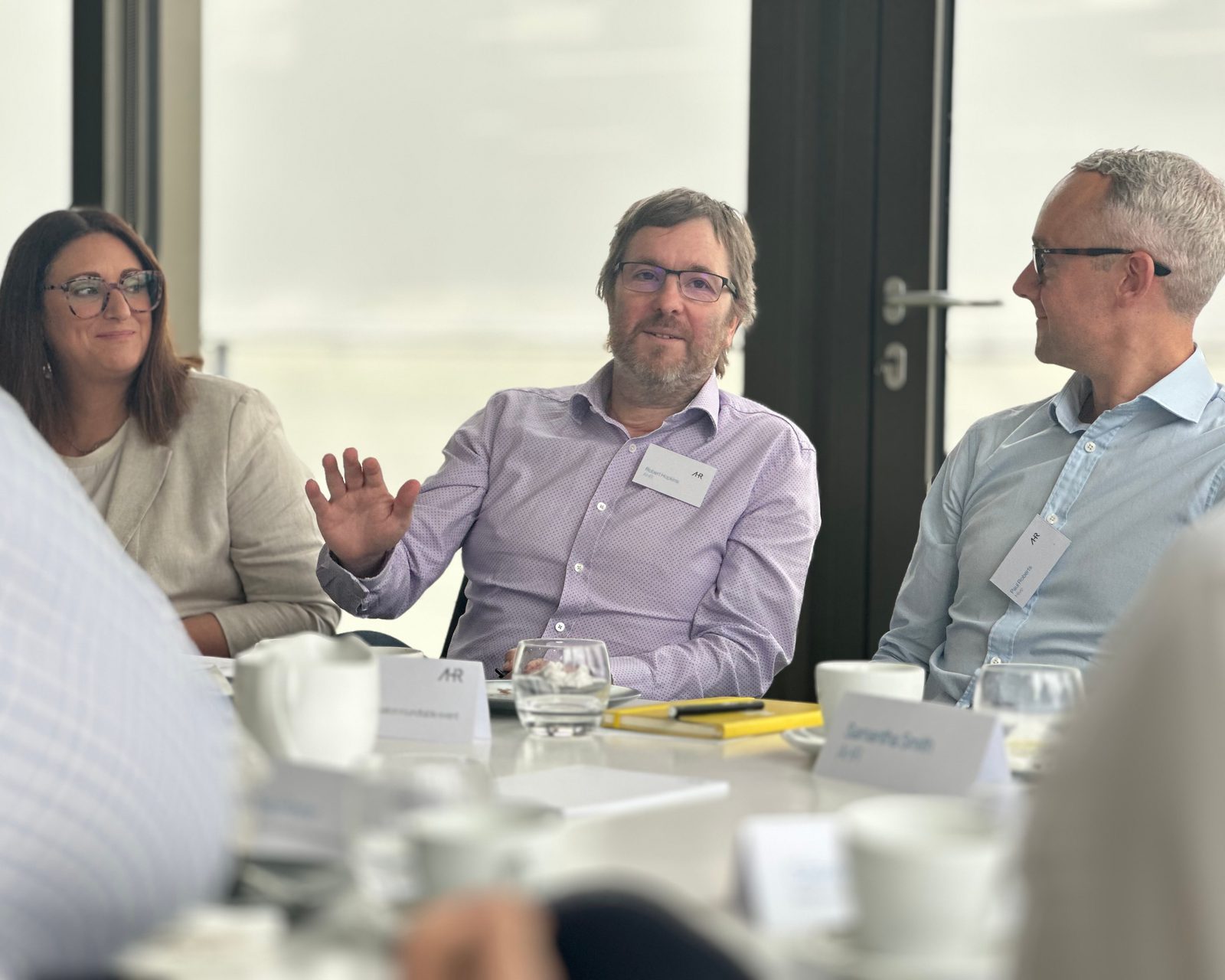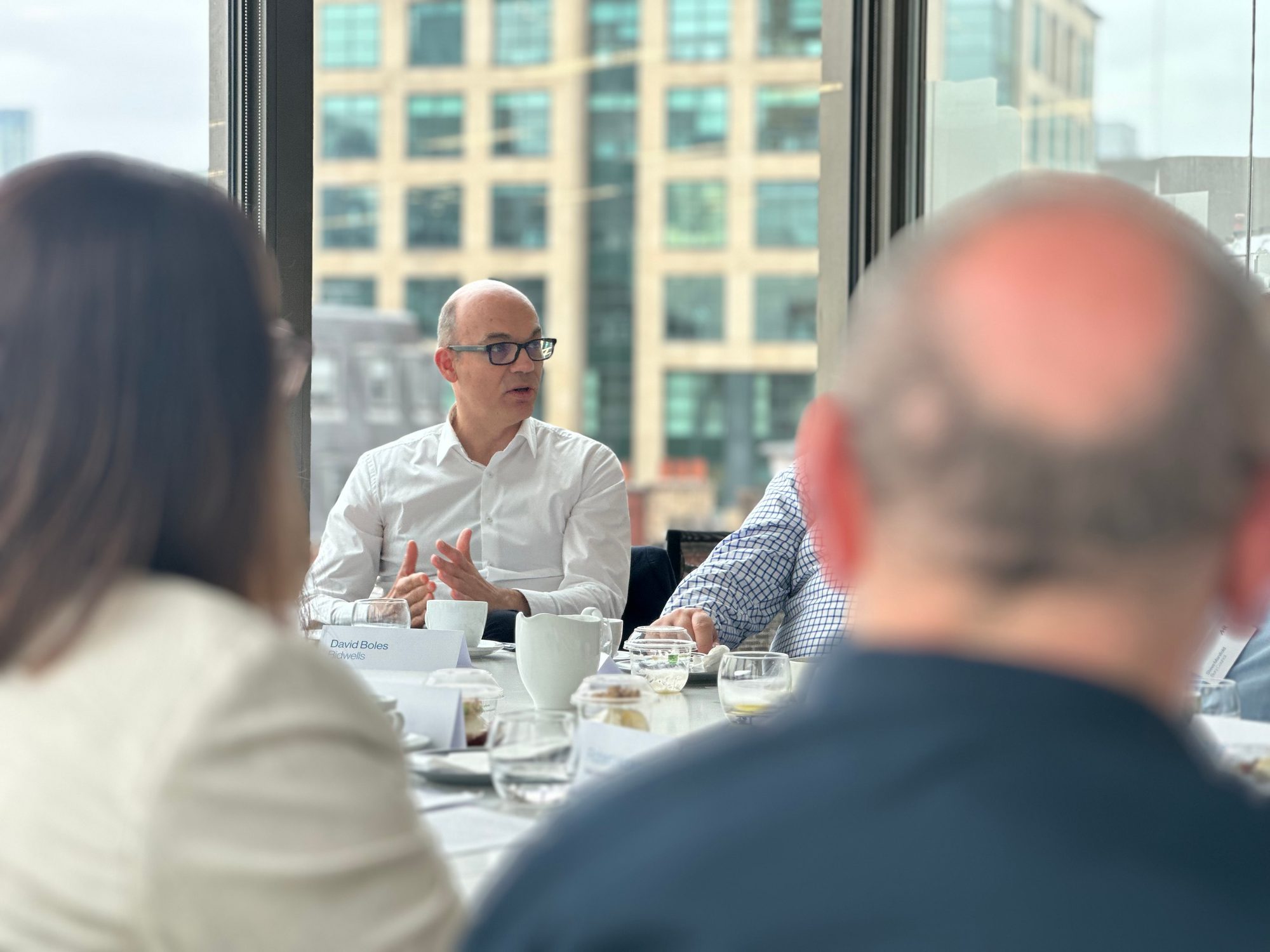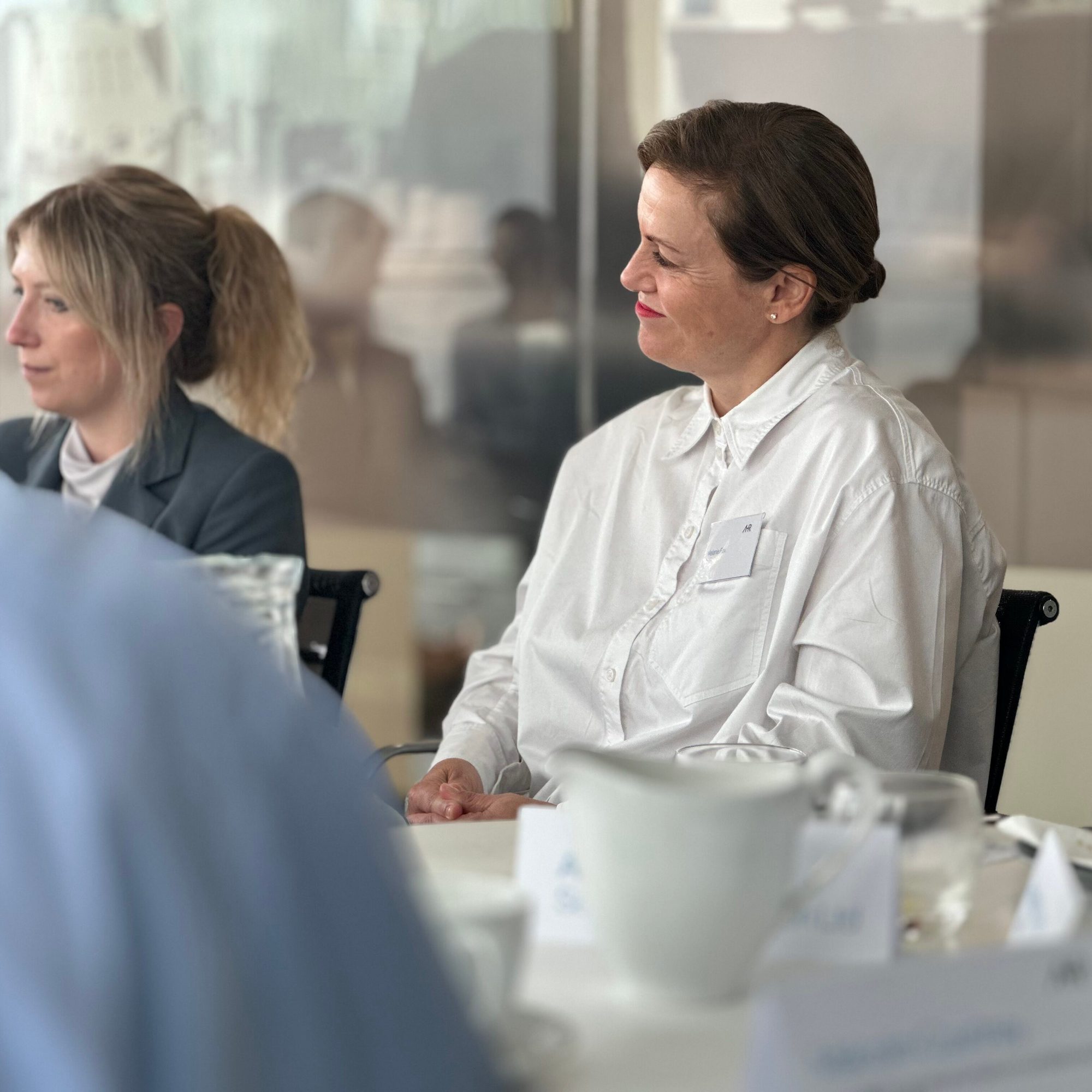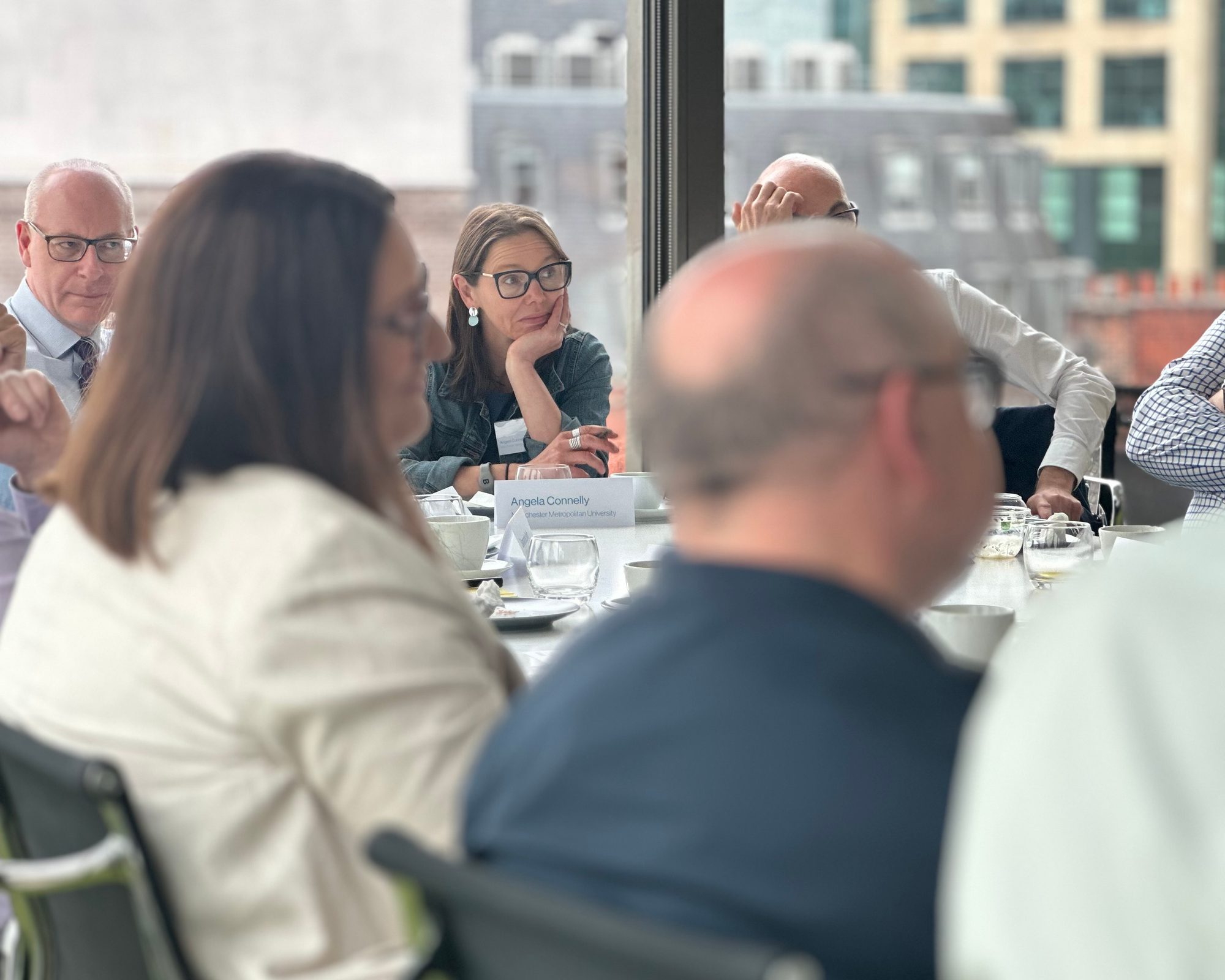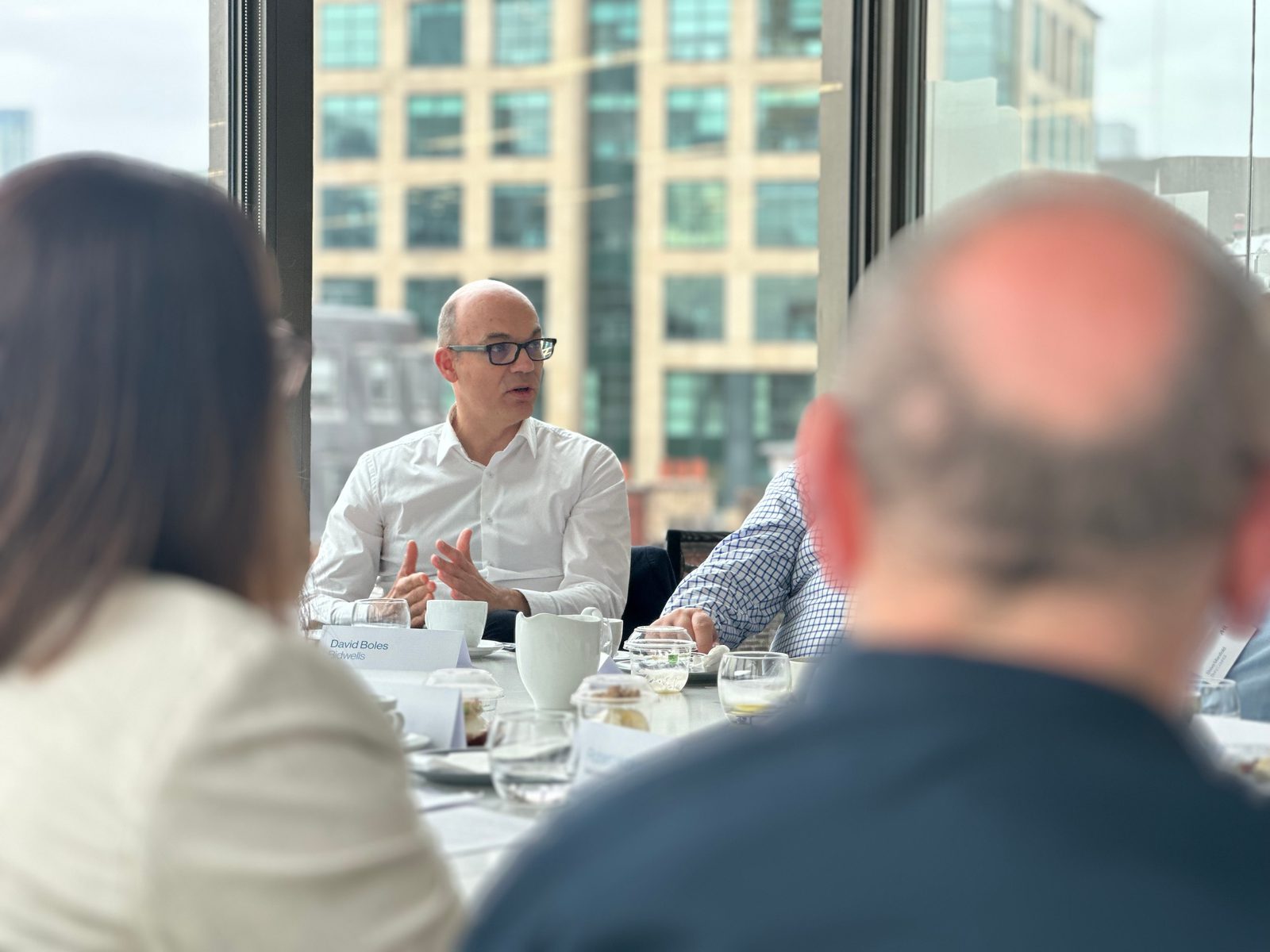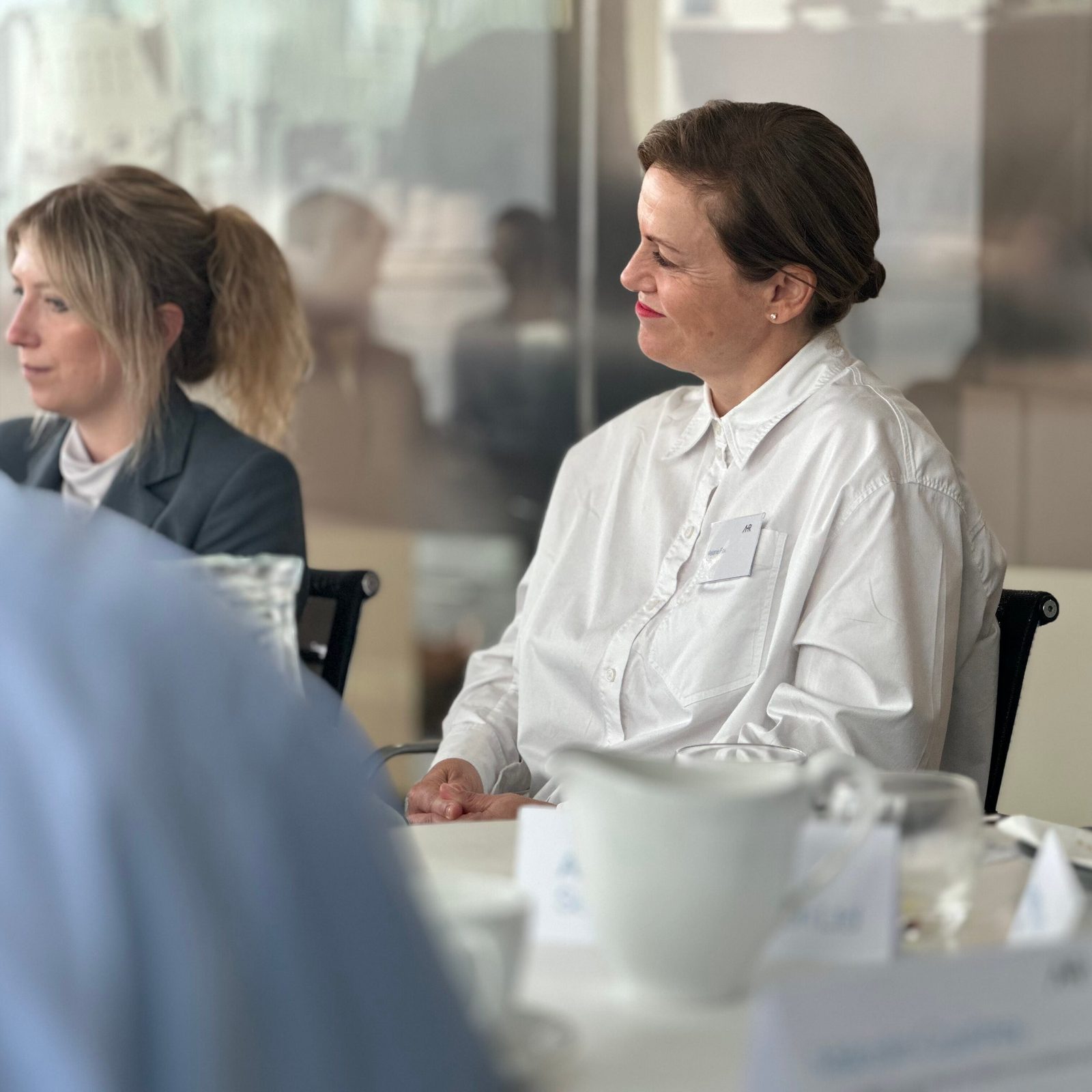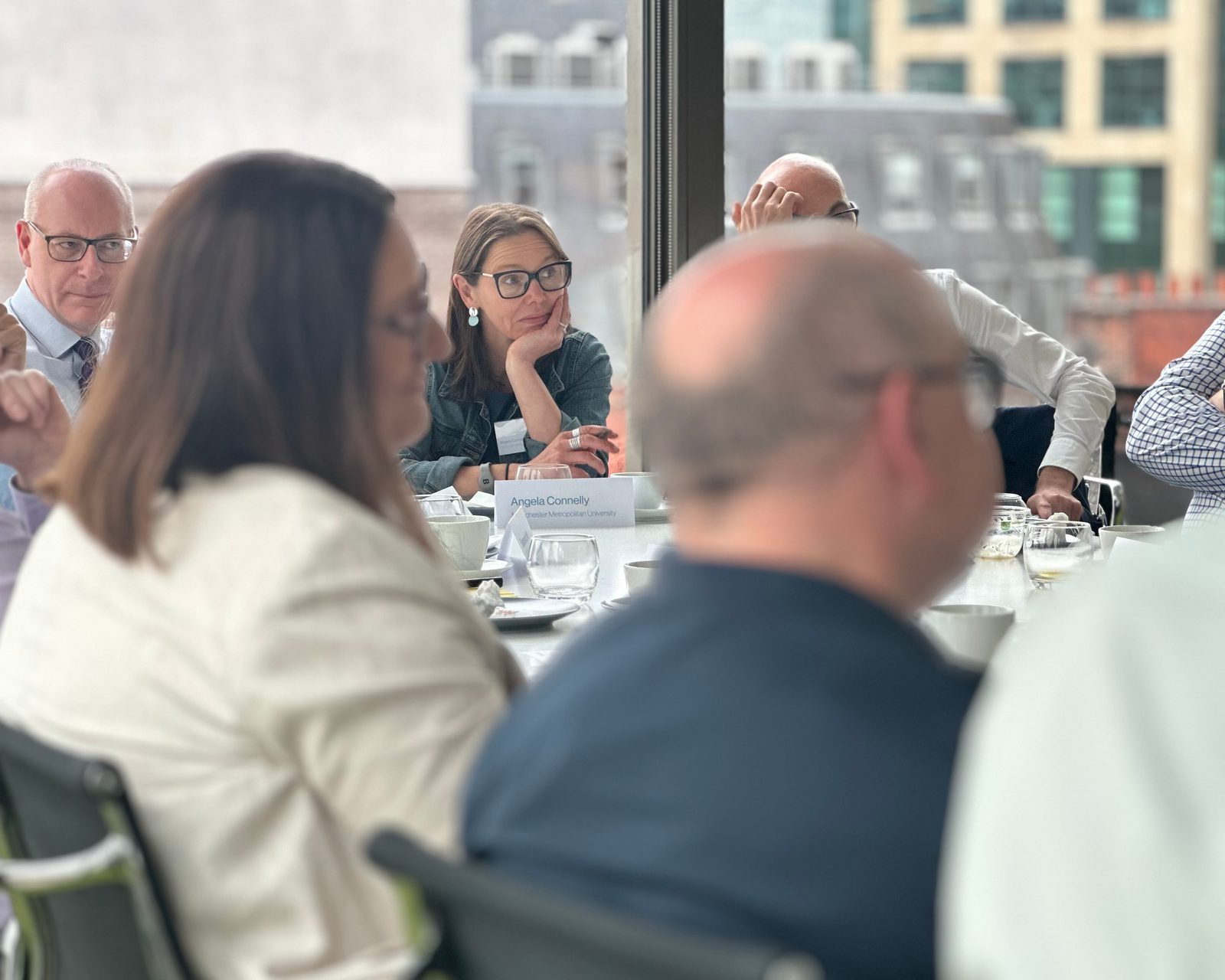
Practice News
Achieving decarbonisation: Circularity and smarter energy use in the built environment
by AHR
As the built environment navigates a rapidly evolving climate landscape, the drive to decarbonise is becoming both more urgent and more complex.
At our recent decarbonisation roundtable discussion in Manchester - the second in our series following a successful conversation in Birmingham - representatives from across the public and private sectors came together to delve into the opportunities and challenges facing the industry.
While familiar themes such as sustainable materials and carbon reduction remained central, our discussion in Manchester introduced new perspectives shaped by local contexts and real-world constraints. This fresh lens helped deepen the debate, with wide-ranging conversation on circularity, energy resilience, smart building operation and the regulatory changes needed to support meaningful, long-term impact.
What connected everyone in the room was a shared commitment to move from intention to implementation, while recognising that decarbonisation will require not just technical solutions but cultural change, particularly in how value is perceived across design, procurement and building management.
Read on for more insights and key takeaways.
1. Embedding circularity into real-world projects
The discussion opened with a focus on construction materials, where participants acknowledged a growing need to move beyond carbon calculations and into questions of material ethics and reuse.
Local projects provided inspiration, including examples of buildings that reused components, implemented dry construction methods and delivered strong commercial outcomes while integrating circular design principles.
While international benchmarks were discussed, including the introduction of digital material passports and circularity criteria in planning frameworks, participants also highlighted the challenges of applying these ideas in the UK. Several noted the difficulties in meeting circular economy goals on tight programmes or where local recycling infrastructure is lacking.
Education and public sector buildings add unique challenges. Driven by Department for Education policy, all new school buildings now include green roofs and rooftop PVs, often generating surplus electricity. However, grid constraints mean much of this energy can be wasted. Alternatives such as using surplus for EV charging or battery storage were discussed, though practical limitations remain. This highlights the urgent need for grid investment to support decentralised energy generation. Meanwhile, the rapid pace of technological change - such as smart systems and air source heat pumps - is outpacing the capacity of estates teams, who are often under-resourced and overwhelmed by complex new systems.
One example shared was a research project using design-stage software to reduce plasterboard waste by optimising layouts and questioning why standard sizes persist, some still based on outdated factors like 1960s van dimensions. Simple reuse strategies, such as repurposing raised access flooring or working with manufacturers on bespoke sizing, can also reduce waste. However, a major barrier to circularity remains the lack of certification and assurance for reused materials, particularly where professionals are expected to indemnify products with uncertain provenance or lifespan, making liability and PI insurance a key concern.
2. Accountability and regulation: Misaligned incentives
Another thread of discussion was the misalignment between sustainable design intent and operational delivery. One example highlighted the challenge of maintaining environmental ratings post-occupancy, where tenants can make changes that compromise performance, but landlords are reluctant to intervene for fear of losing them.
The group also reflected on the absence of enforceable post-occupancy requirements, and questioned whether local authorities should be given greater powers to hold occupiers to account if schemes have been approved based on sustainability credentials.
The importance of post-occupancy requirements and long-term building performance has also been explored in other forums. Our recent podcast episode featured the Workplace Manager at the Royal College of Physicians’ northern home The Spine - an internationally recognised healthy building - who shared reflections on the day-to-day considerations required to uphold environmental standards. A gentle reminder that the work doesn’t end at design or certification; sustained effort in operational practices is essential for achieving long-term outcomes.
You can listen to that conversation here.
There was also cautious optimism that stronger regulation could help. Participants discussed the EU’s taxonomy rules - which link circularity and building performance to funding - as a potential model. In the UK, however, consensus was that accreditations alone were not enough. Several attendees advocated for using frameworks like BREEAM or WELL as toolkits to inform design and specification rather than ‘chasing badges’.
3. Energy and the grid: Opportunities in decentralisation
The second half of the session turned to energy: how we generate, manage and reduce it.
Despite a 50% reduction in carbon emissions since 2008, UK energy costs remain among the highest in Europe, partly due to historic policy decisions that have attributed green investment costs onto bills rather than considering taxation. With grid constraints worsening, particularly in the South East, the group discussed whether regional energy pricing could help drive ‘Levelling Up’ by encouraging industries to locate closer to abundant sources of renewable energy, rather than relying on intrusive infrastructure to move power across the country.
Several attendees shared examples of localised generation efforts, from solar PV on new schools and colleges to exploring electric vehicle charging linked to local energy capture. But again, the barriers were clear: technical knowledge gaps, battery safety concerns, access to funding, and in many cases, the inability of the grid to absorb excess power.
Some organisations are already exceeding their energy efficiency targets by focusing on recommissioning systems, improving data insights, and aligning operational behaviours with actual need. In one case, simple control adjustments resulted in a dramatic reduction in gas usage.
The group also touched on digital solutions, from smart building systems that collect vast amounts of operational data, to user-friendly tech that enables more efficient control over heating and lighting. Many agreed that such innovations, combined with behavioural nudges and good communication, have a vital role to play.
4. On the road to collective progress
Like previous discussions, it was clear that the path to decarbonisation is not linear, but it is navigable. The built environment has already made progress, and there is growing alignment around the principles of circularity, smarter energy management and long-term accountability.
However, gaps remain. Regulation must catch up with ambition. Clients need support to move from theory to practice. And the supply chain needs tools, data and incentives that align with whole-life value rather than short-term cost.
The session reinforced the power of open, cross-sector conversations to push thinking forward. From carbon data to cultural change, it is clear that no one organisation holds all the answers. But through collaboration, shared insight, and a willingness to challenge the status quo, we can accelerate the built environment’s transition to a net zero future.
A big thank you to industry professionals who joined us in Manchester. We look forward to continuing the conversation through future sessions across the UK — and to working with you in building a more sustainable, resilient and responsible future for our industry.
To learn more about how we are achieving decarbonisation through retrofit, visit our perspectives page here.
Posted on:
Jul 22nd 2025
Topics:
Share on
Related Articles

Thought Leadership
Optimising university estates to enhance the student experience
As competition among universities intensifies, the role of the campus estate in shaping student experience has never been more important.
Date: 15 Jul 25
by AHR

Practice News
Achieving decarbonisation: Rethinking materials in construction
This latest series is framed around the theme ‘Shaping the future’ — with a particular focus on sustainable materials and energy in construction.
Date: 13 Jul 25
by AHR

Thought Leadership
People first: Designing for community and identity
We explore the social dimension of placemaking and how inclusive design, meaningful engagement and cultural identity contribute to environments that are enriching and enduring.
Date: 7 Jul 25
by AHR

Thought Leadership
Rethinking healthcare spaces to meet a reimagined NHS
The Government’s new 10-Year Health Plan for England sets out a transformative direction for the NHS - anchored in prevention, digital delivery and localised care.
Date: 4 Jul 25
by Victoria Shepherdson
Associate Director, Architecture
